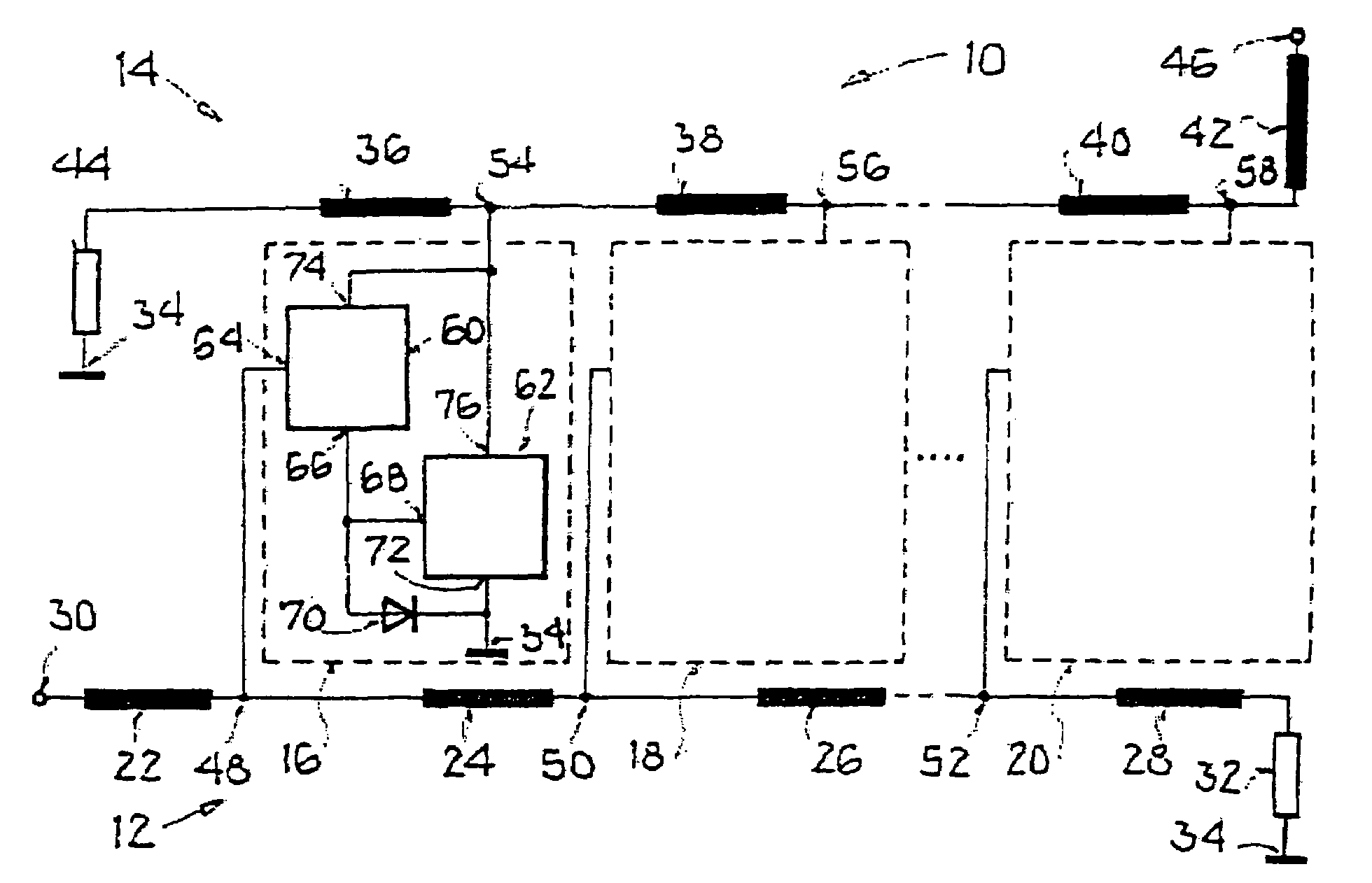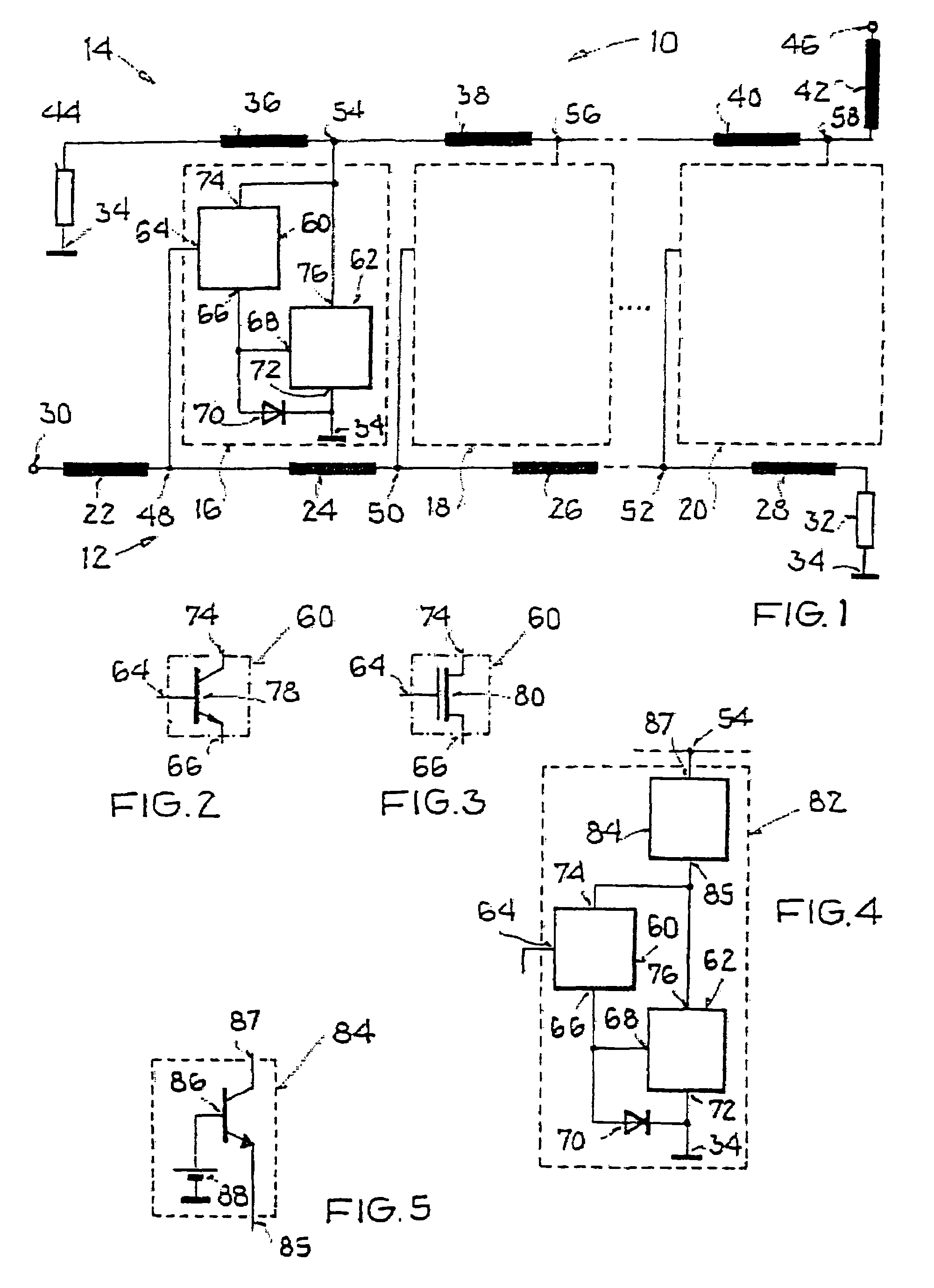Distributed amplifier topologies with improved gain bandwidth product
a technology of amplifiers and topologies, applied in the direction of amplifiers with transit-time effects, amplifiers with semiconductor devices/discharge tubes, amplifiers with coupling networks, etc., can solve the problem of limited number of unit cells that can be usefully used, and achieve the simplest possible structure of the unit cells involved, the effect of increasing the product of gain and bandwidth
- Summary
- Abstract
- Description
- Claims
- Application Information
AI Technical Summary
Benefits of technology
Problems solved by technology
Method used
Image
Examples
Embodiment Construction
[0036]Specifically, FIG. 1 shows a distributed amplifier 10 with an input network 12, an output network 14, and n=3 unit cells 16, 18, 20, which are connected in parallel to one another between the input network 12 and the output network 14. The input network 12 has a series connection of inductive elements 22, 24, 26, 28, which connects an input 30 of the distributed amplifier 10 to a reference voltage 34 through an ohmic resistor 32. The output network 14 also has a series connection of inductive elements 36, 38, 40, 42, which connect a reference voltage connection 34 to an output 46 of the distributed amplifier 10 through an ohmic resistor 44.
[0037]Each unit cell 16, 18, 20 is connected to the input network 12 through one unit cell input 48, 50, 52 and is connected to the output network 14 through one unit cell output 54, 56, 58. Each pair of adjacent unit cell inputs 48, 50, 52 is connected together by one of the inductive elements 24, 26. In corresponding fashion, each pair of ...
PUM
 Login to View More
Login to View More Abstract
Description
Claims
Application Information
 Login to View More
Login to View More - R&D
- Intellectual Property
- Life Sciences
- Materials
- Tech Scout
- Unparalleled Data Quality
- Higher Quality Content
- 60% Fewer Hallucinations
Browse by: Latest US Patents, China's latest patents, Technical Efficacy Thesaurus, Application Domain, Technology Topic, Popular Technical Reports.
© 2025 PatSnap. All rights reserved.Legal|Privacy policy|Modern Slavery Act Transparency Statement|Sitemap|About US| Contact US: help@patsnap.com



